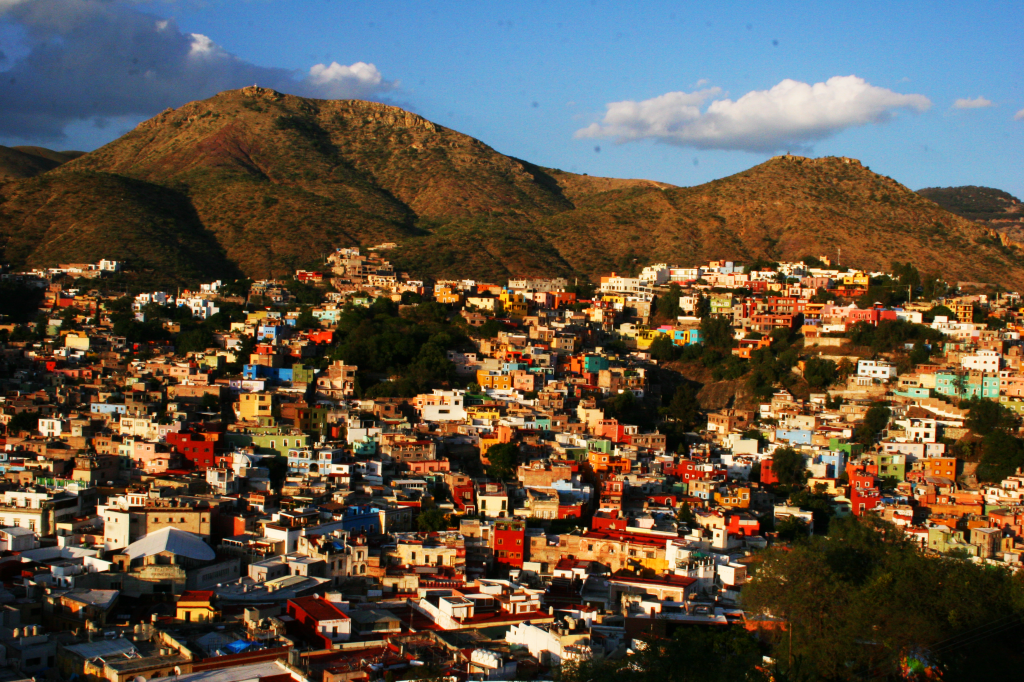
Katherine Domek sits at a desk the monastery gave her to enjoy and draw, which was uncommon at most architectural sites, where she’d have to kneel in piles of rubble to draw.
My name is Katherine Dombek. I am a 4th year architecture student and I just returned from a semester abroad in Mexico. For three weeks, I got the opportunity to travel through colonial cities in Mexico and pre-Columbian ruins in Mexico and Guatemala. During this time I got to study and experience such things as the complex urban fabric and culture of Guanajuato, the variations of the unique open-air chapel typology seen throughout Mexico in the “Age of the Convento” and the awe-inspiring Mayan city of Tikal. My fellow students and I documented our travels through meticulous pen and ink drawings in a continuous accordion sketchbook practicing crafting a composition and learning techniques for this new media. The finished drawings are 9” x 400” compositions (however some are longer)–the products of literally hundreds of hours of drawing. When we returned to the Mexico City studio, we used the skills we had learned and information we had gathered to create a new urban proposal for a major street near the zocalo (the main public square or plaza for a colonial Mexican city). This project was not about traffic engineering but rather how to use form to create solid-void relationships along this street that would reinforce its vitality within the historic district and improve the quality and organization of public space and systems. Working together with Mexican teachers and architects, we developed a scheme that would accommodate a greater density and provide more public space with more amenities. This was an extremely profitable study aboard semester that helped me gain real experience in urban planning and practice with answering cultural and environmental questions while working within design.

Guanajuato has a unique infrastructure of winding tunnels that resulted when an old river which was diverted, creating especially dynamic moments when these unseen streets reemerge to link into the surface circulation.

The picturesque Guanjuato landscape shows off the city’s verticality and vibrancy… and was a perfect spot for our class to attempt our first gestural drawings.

A typical day travelling through Mexico: the group nestled among ancient ruins trying to capture the essence of the place through precise but expressive pen and ink drawings.

This Mayan temple in the Palenque Cross Group had surprisingly intact relief sculptures and hint at what the combs on top of the temples might have once looked like.

Cantona was a great city with a foundation carved out of a lava flow (traces of which can still be seen outlined by vegetation) and a perfect site for line drawing because abundance of terraced edges.

Our class follows our fearless professor up a steep pyramid in Tikal to sketch a panorama of this expansive site.

. The Temple of the Great Jaguar in Tikal basks in the setting sun as if it has been sitting there for 1,300 years.

A particularly difficult perspective from within a collapse cathedral in La Antigua calls for a peer review and a quick lesson in perspectives which don’t have the guidance of a ground plane.

The group takes a picture within a unique monastery that has cells arrange around a circular courtyard.

Back in Mexico City, the design reviews begin with new drawings and models each week accompanied by a presentation to a panel of insightful but intimidating local architects.




